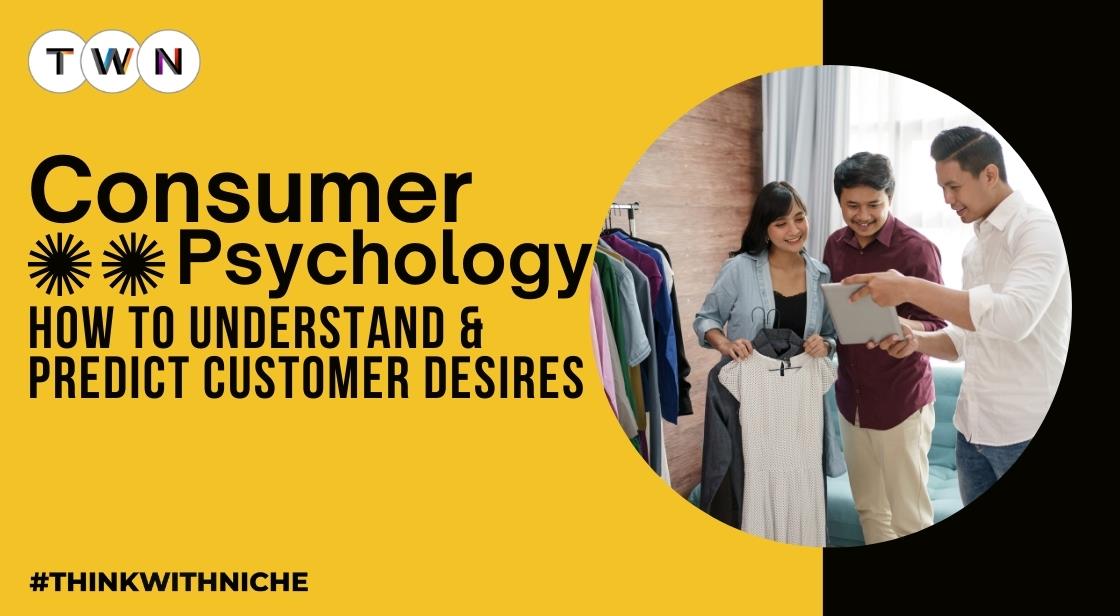Consumer Psychology: How to Understand and Predict Customer Desires

Blog Post
In today's competitive market, understanding and predicting customer desires is crucial for the success of any business. The interplay between supply and demand forms the backbone of effective sales promotion, with demand driving supply and a well-crafted supply stimulating further demand.
This dynamic is particularly relevant in the realm of consumer psychology, where anticipating and influencing customer behavior can significantly impact sales. Companies that master the art of presenting their products effectively and leveraging psychological and emotional triggers are able to market their goods and services more successfully.
In this blog post, we will delve into the world of consumer psychology, exploring its origins, key theories and models, and the influence of emotional, social, and cultural factors on purchasing decisions.
We will also discuss the power of personalization and the use of data to understand consumer interests, as well as the effectiveness of psychological triggers in marketing.
By the end of this post, you will gain valuable insights into how businesses can leverage consumer psychology to enhance their marketing strategies and build a loyal customer base.
Consumer Psychology: How to Understand and Predict Customer Desires
There are a few basic views for sales promotion. Demand begets supply, and a successful supply creates demand, which then plays into the hands of the provider of goods and services. Both ideas have a right to exist and find a lot of evidence in the real-life promotion of goods and services.
The key point for the formation of demand is to anticipate the potential customer's behavior. Knowing how to properly present a product and what psychological and emotional levers to pull, manufacturers successfully market their goods year-round.
Let's take as a simple example the site masterpapers.com, which provides services for writing student papers. The site successfully sells its services by giving people exactly what they want: quality paper writing help. They successfully promote their ideas through advertising platforms and find a great response. Most large businesses try to work on the same principle.
They anticipate what their customers need and then emphasize it in their advertising campaigns while using a number of psychological tricks and techniques that help to increase sales further.
Understanding Consumer Psychology
Consumer psychology is a separate subsection of behavioral science, which emerged at the intersection of marketing and psychology. This direction's particular development occurred in the late 20th century when scientists began actively studying human behavior principles.
Part of these studies concerned just the behavior and psychology during the purchase. With the knowledge of how the buyer thinks, marketers began developing various strategies to influence behavioral psychology.
Also Read: Top Direct-to-Consumer Brands Revolutionizing India's Retail Landscape
The Main Theories and Models
One of the main models of buying behavior is the four-level AIDA model (Attention, Interest, Desire, Action). This model describes the main four stages a person goes through before buying. The EKB model (Engel, Kollat, Blackwell) details the decision-making process and includes awareness of need, information search, evaluation of alternatives, decision to buy, and post-purchase behavior.
These models have become almost desktop books for all businesses. They were the first to describe and justify a person's steps before buying. For example, the AIDA model emphasizes attracting attention to the product as it is the starting point of interest and, from it, to desire and purchase. Marketing strategies based on this model are built to give buyers confidence at each step.
That is, it increases interest, makes the product more attractive, awakens the desire to buy, and gives emotional satisfaction from the possession of the product.
The Influence of Emotional Factors
Most purchases are not related to household needs and do not require too much money a person makes emotionally. This is confirmed by numerous studies, which show that about 95% of purchasing decisions are based on emotional arguments. Companies such as Coca-Cola and Apple are actively using emotional marketing strategies.
Coca-Cola has successfully carried through years of product association with holiday and family harmony, reinforcing these associations with major national and cultural holidays.
Apple, in turn, initially staked on innovation and exclusivity, proving to customers that only by owning their product can they feel like they are part of an elite group of owners of the best gadgets.
The buyer's emotions also arise because of the use of company-specific color schemes, memorable slogans such as "I'm Lovin' It" at McDonald's, and tactile sensations. Such was the touch button in one of the iPhone models. For example, red is associated with excitement and energy, while blue evokes calm and trust. Companies use this knowledge to create emotionally charged promotional materials that will attract attention and evoke the right emotions in consumers.
Social and Cultural Influences
Factors such as general fashion, family, friends, and social groups strongly influence customer behavior. For example, studies show that in Asian countries, advertising companies emphasize group popularity, involvement in something common, and the shared joy of possession, while in Western countries, there is a more valuable advertising approach that emphasizes the buyer's uniqueness. Examples include Apple's "Think Different." or Nike's "Just Do It.
Cultural characteristics also play an important role in the perception of products and brands. For example, some cultures value minimalism and simplicity, while others value luxury and opulence. Understanding these differences allows companies to create targeted marketing campaigns, proving that owning a product emphasizes fashionable cultural trends.
Personalization and Customization
A study titled "The Power of Me: The Impact of Personalization on Marketing Performance" by Epsilon suggests that 80% of consumers are likelier to buy a product if offered a personalized experience. This could be customized products, discounts, or customized content. Personalization can manifest itself in a variety of ways, from name-calling in email newsletters to product recommendations based on previous purchases.
Using Data to Understand Interests
Google Analytics and CRM systems allow you to track user activity and learn their preferences and desires. Marketers skillfully turn this data into advertising campaigns that address exactly those aspects that are most interesting to a particular group of buyers. Data can include information on demographics, website behavior, purchase history, and even social media activity. A study by Forbes found that marketing companies that actively use data analytics generate 23% more revenue for businesses.
Psychological Triggers in Marketing
One of the primary triggers in marketing is scarcity. Marketers often use this technique by stating that a limited number of items are left or offering a discount for a limited amount of time. Once this method began to be used, its effectiveness was tremendous. Studies showed that using this trigger increased sales by 200%. Now, this method is also used, although with a lower effect. Just as good triggers for purchase are customer reviews and product reviews (expert opinions).
Conclusion
Business success depends on a company's understanding and anticipating its customers' desires. Introducing knowledge about consumer psychology into marketing strategies and daily practice allows businesses to improve their performance and create a loyal customer base that will promote the company's products to others.
You May Like
EDITOR’S CHOICE












